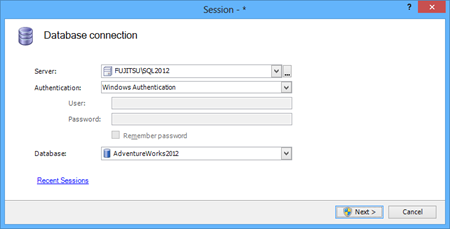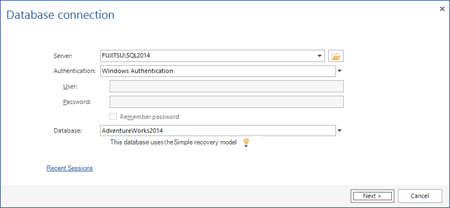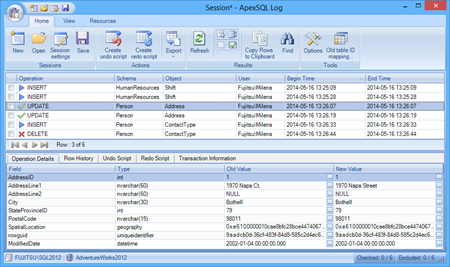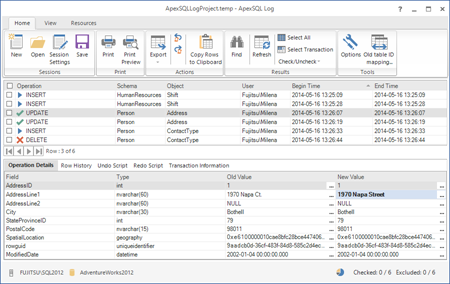The new release of ApexSQL Log, an auditing and recovery tool for SQL Server databases is announced for the end of May 2014. In ApexSQL Log 2014, we introduce support for SQL Server 2014, new design, improved usability and quality.
Support for SQL Server 2014
ApexSQL Log 2014 fully supports reading SQL Server 2014 databases and their online transaction logs, detached transaction logs, and transaction log backups.
New design
The same as other 2014 version ApexSQL tools, ApexSQL Log 2014 has a new metro look, that corresponds to the latest Windows GUI design.
The following screenshots show difference between the old and new design:
The Database connection dialog in ApexSQL Log 2013
The Database connection dialog in ApexSQL Log 2014
The main ApexSQL Log 2013 application window
The main ApexSQL Log 2014 application window
Improved usability
Based on our users’ feedback, we realized that determining the database recovery model can be time consuming. As ApexSQL Log reads transactions in transaction logs, a database in the Simple recovery model will not provide enough data sources for successful reading, especially when it comes to reconstructing UPDATEs.
To help ApexSQL Log users to quickly determine the database recovery model, we have introduced a new label in ApexSQL Log 2014. After the database is selected from the drop-down list in the Database connection dialog, the database recovery model is automatically shown.

If the database recovery model is Pseudo full, it means that a database recovery model was changed to Full, but a full database backup hasn’t been made afterwards, so the database still behaves as when in the Simple recovery model.

Another usability improvement is that the updated column values are highlighted in the Operations details tab, so it’s much easier to spot the changes.
The Operations details tab in ApexSQL Log 2013
The Operations details tab in ApexSQL Log 2014
Improved quality
ApexSQL Log 2014 contains fixes for known issues reported in ApexSQL Log 2013.
May 20, 2014















